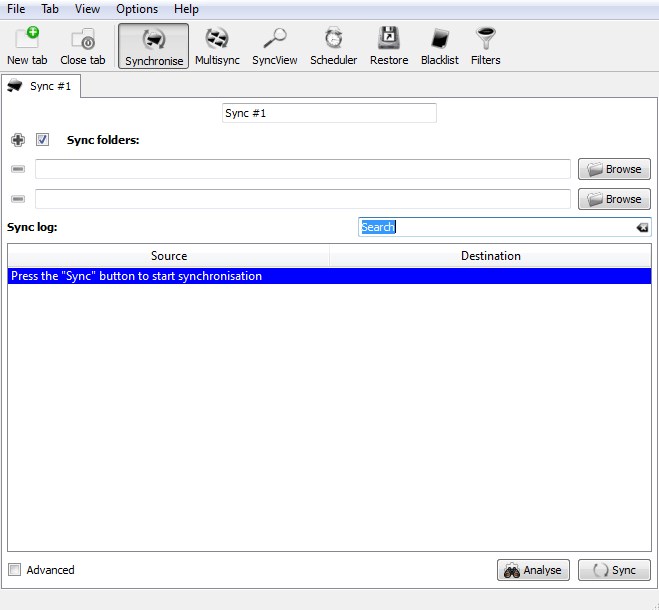

The Newer Files option checks whether any files have been modified and allows you to copy over the modified content. The New Files option can be used to synchronize only the files that are missing in the other folder while preserving the rest. That's not surprising since the concept of the program is to keep folders in sync so the other folder cannot have extra files. This option will delete older files (that were not in the source folder) from the destination folder. if Folder 1 has 100 documents, and Folder 2 doesn't have any, use the Clone Folder 1 option to save the data to the second folder. The Clone Folder 1 and Clone Folder 2 options make a 1:1 copy of the files in a selected folder and syncs it to the other folder. If I hit synchronize the data in Folder One will be copied to Folder Two, and vice versa. In this screenshot, I selected two non-matching folders to give you an idea of what it looks like. The files are what is not synced and these will be synchronized when you run the sync operation. The Synchronize button displays the differences between the folders to find out differences between the two folders. Select the View mode on the toolbar to display additional options. The delete button on either pane can be used to delete the files from their respective list (and the disk). Highlight the option you want and click on the Analyze button, and the program will start a comparison of the two folders. The number of files that are common in both folders are displayed under the Files in Sync section on the toolbar. Hit the Analyze button on the toolbar and a small pop-up menu appears with options to only scan the root folder or to include sub-folders as well. The selected folder's path is displayed in the small pane above the icons. Click on the folder button at the top left of each pane to select the directory that you want to sync. The program's interface has two panes that display the contents of the two folders that you specify. Or you can use it to sync data from or to USB drives. You can use the application to backup important documents, personal data, videos, game saves, or other data to external drives. The important thing here is that File Synchronizer is not restricted to music files you can use it as a backup tool to sync anything between two folders. As a matter of fact, the application is made by a developer who creates music related software. This kind of backup is very common among music lovers, to keep their phone's music library up to date. You can use the program to copy any missing data to the other folder with a couple of clicks. Works the same way, ooREXX command line with XML config.File Synchronizer is a simple application that checks two folders and verifies if the contents of one directory matches the other. I wrote a similar program to access my TrueCrypt volumes, which happen to be on removable drives, so it was just easier to write a program to access them as they're inserted. The problem for the rest of you is 1) it's in ooREXX, 2) it runs in a command prompt, so the UI is similar to the Unison non-GTK, 3) configuration is an XML file that you have to create/update manually. I looked at a lot of them, SyncExp, Unison, Toucan, Synkron, ozSync, Allway Sync, MS SyncToy, couldn't find one that was just right, so I wrote my own. configuration should be stored with the program, and plain text is nice "batch" mode with no user interaction for command scripts creates sub-directories automatically, but also deletes empty sub-directories program figures out what it thinks the action should be, but prompts user for each file user can choose the amount of information he/she wants to see pattern matching for files/directories to include/exclude tasks can be true sync, or one-way only (typically for backup) should work for diskettes, LAN drives, major file systems, should be able to always ignore files like Thumbs.db (doesn't have to be added for each task) It should be dynamic, knowing the impact if you plug/unplug an external drive some concept of "tasks", based on which drives it's able to find, then you choose which of those jobs you want to run.

This snapshot should be stored with the program, not in %APPDATA% (because then it's not portable) and not in the directory to be synchronized (because that creates hidden files, and by definition changes the directory) true synchronization means keeping a "snapshot" of the synchronized directories to properly handle deletes. If I have a USB hard drive and a flash drive, I should be able to sync them on my laptop or on my desktop, regardless of what drive letters they have. portable, not just for execution, but for the paths to be synchronized as well. IMHO, the perfect synchronization program needs these features:


 0 kommentar(er)
0 kommentar(er)
